New Asian diner Dashi spices up Berlin’s Mitte district
Dashi, a new diner in Berlin’s Mitte district, offers an appetising and harmonious juxtaposition of Asian and Western worlds
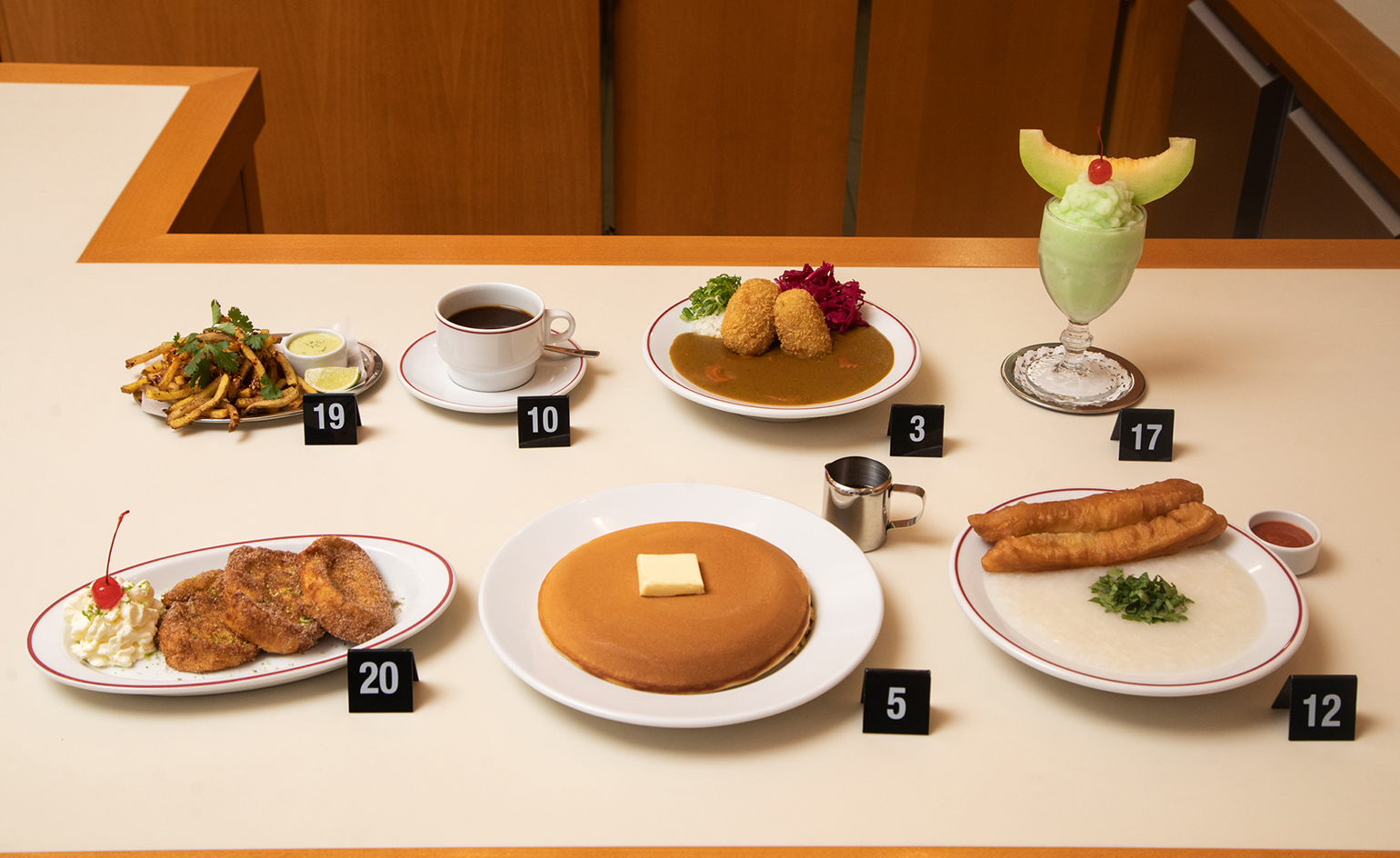
A recently opened Asian diner in Berlin’s Mitte district, designed by Danish studio Mentze Ottenstein, creates a new community framework by looking at the diverse identities that exist in the city today. Dashi is the creation of Thu Thuy Pham and Thao Westphal, Vietnamese-born childhood friends who were raised in Germany.
For many families that emigrate from their motherland, a career in the food and hospitality industry is often the most straightforward route. ‘Dashi is about coming to terms with who we were as kids and being proud of our upbringing,’ says Pham.
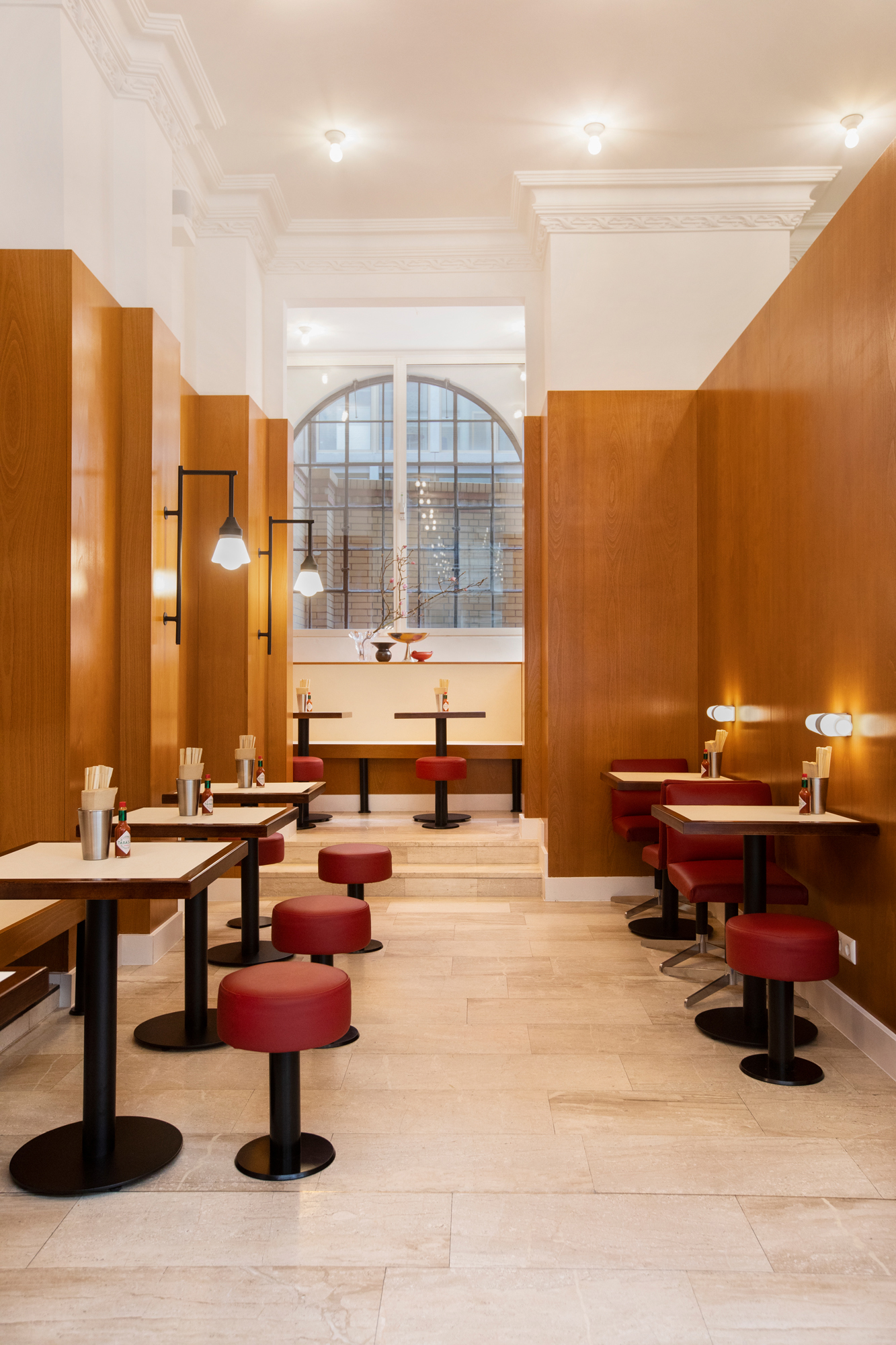
The venue is a cross between an American diner and a Chinese cha chaan teng café
Dashi takes its inspiration from the cha chaan teng cafés found in southern China as early as the 1940s, and kissaten, Japanese tearooms and coffee houses dating back to the early 20th century and known for breakfasts of thick toast with eggs.
A crown moulding and a constellation of ceiling lights give the otherwise austere space depth. ‘We like to see a space and try to figure out what was the history here. Like archaeologists, we look at the layers and try to look for the potential in a space,’ says Mathias Mentze, of Mentze Ottenstein.
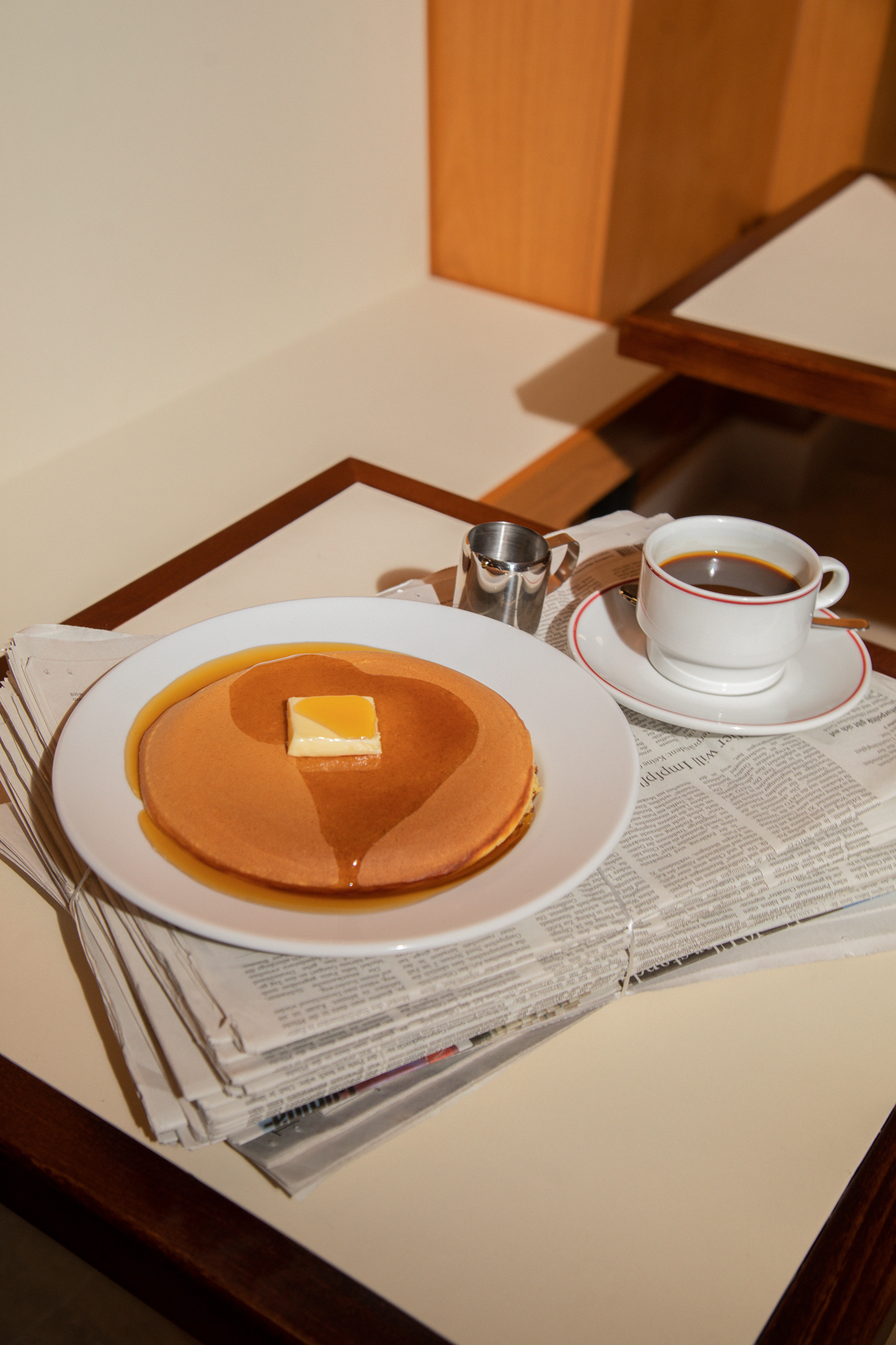
Hotcakes served with butter and maple syrup
‘For Dashi, instead of changing the travertine floor or the bronze doorknobs, we made decisions that highlighted that quality we liked and that spoke the same language as our ideas,’ elaborates studio co-founder Alexander V Ottenstein.
The finished space is nuanced in its complexity and full of surprises that align with the diner’s overall concept. The main dining area is flanked by windows, letting in generous natural light. An inviting counter of natural oiled ash, pushed forward and to the side, is where the front-of-house team greet diners as they enter the space, which includes wall lamps designed in 1965 by Sigvard Bernadotte for Ifö Electric, ash wood panelling and custom-made, American diner-style leather stools in a muted red.
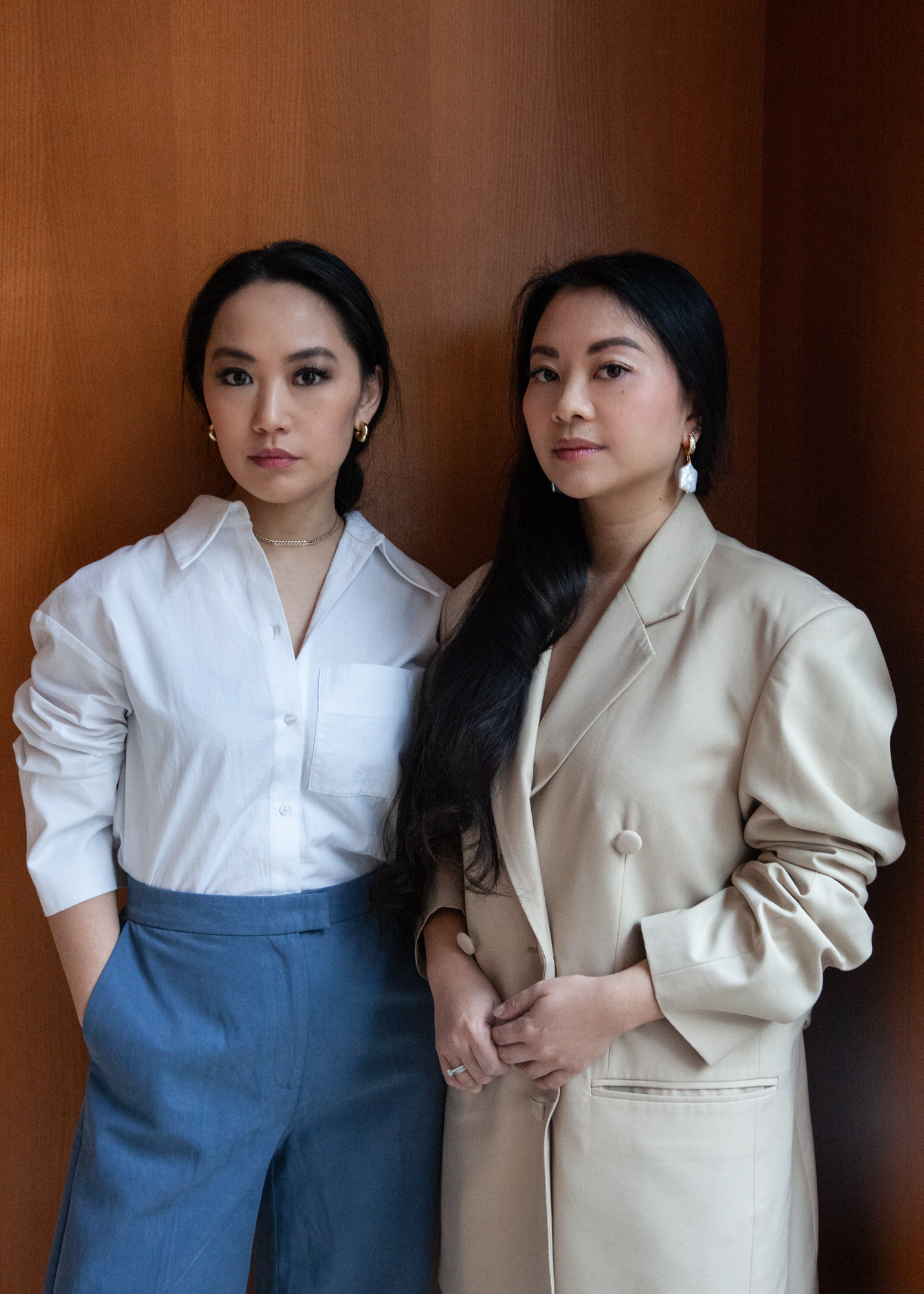
Founders of the diner, Thu Thuy Pham and Thao Westphal. Pham wears blouse, by Aligne; trousers, by Samsøe & Samsøe. Westphal wears blazer, by William Fan; earrings, by Pearl Octopussy. Stylist: Christina Neri
Dashi’s menu features South East and East Asian classics, as well as a few familiar Western dishes with a twist, influenced by yōshoku, a Japanese interpretation of European dishes.
Wallpaper* Newsletter
Receive our daily digest of inspiration, escapism and design stories from around the world direct to your inbox.
The diverse kitchen team includes members of Chinese, Japanese, Korean, Brazilian and American descent. ‘Our parents came here and sold Chinese and Vietnamese takeout that they adapted to the Western palate because it was the way to survive. But we wanted to flip that,’ Pham says of Dashi’s ‘melted cuisine’.
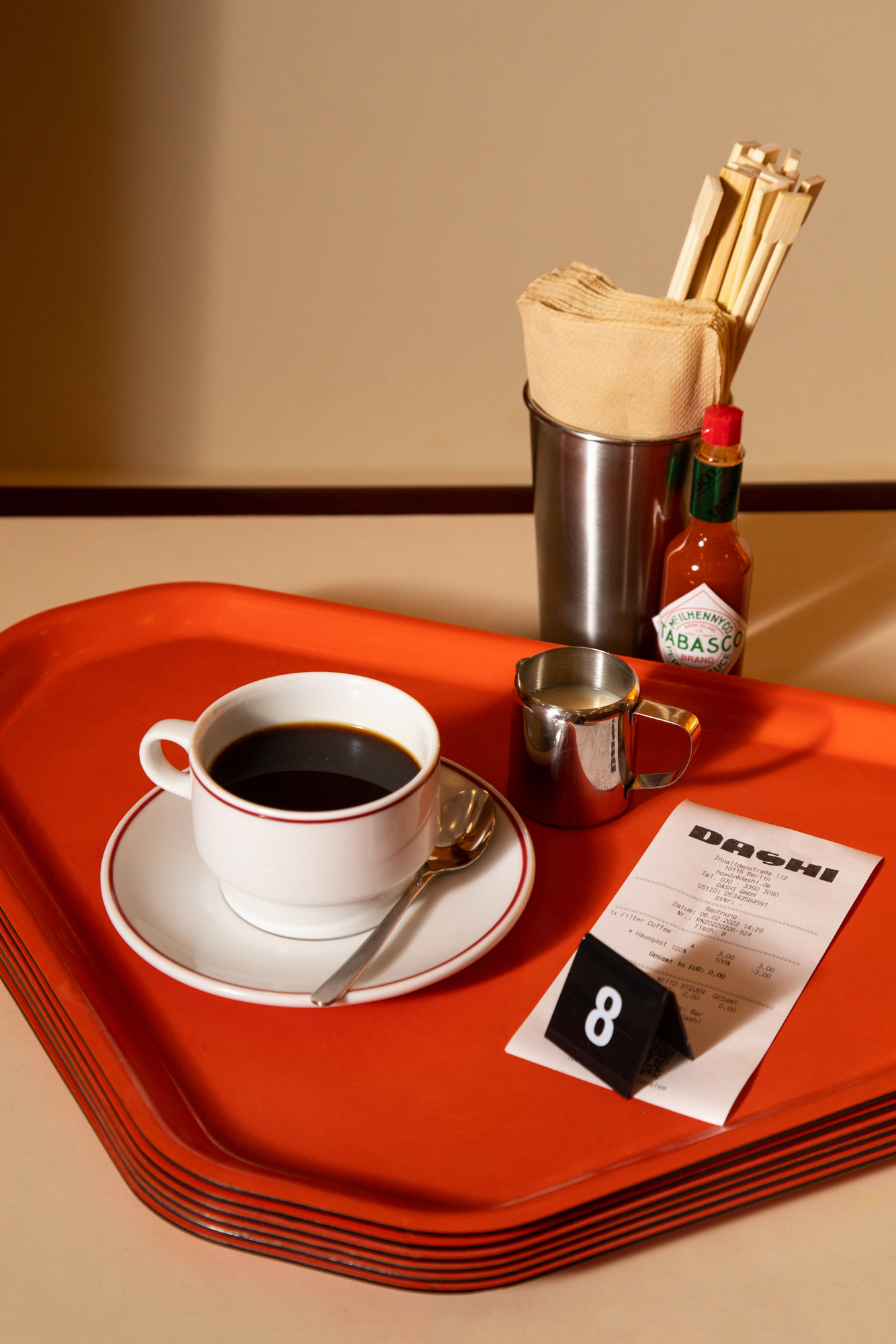
Highlights include chicken congee with Chinese doughnuts, katsu sando with banh mi accoutrements, korokke curry, fries dusted in Sichuan pepper, and winter melon iced tea with grass jelly cubes. Of the restaurant’s name (taken from the eponymous Japanese stock), Westphal says, ‘Dashi is a base ingredient that allows us to build on Eastern and Western flavours. Although it’s Japanese, the terminology resonated with us.’
The pervading theme in all of this – the concept, the menu, the design – is a certain duality that comes from finding harmony in diversity. ‘An Asian diner is really a juxtaposition of two worlds,’ Pham explains. ‘We are in-between people. We feel at home anywhere and nowhere. Dashi itself is a project of contrasts. It is the juxtaposition of many things.'
INFORMATION
A version of this article appears in the April 2022 issue of Wallpaper*, on newsstands now and available to subscribers.
-
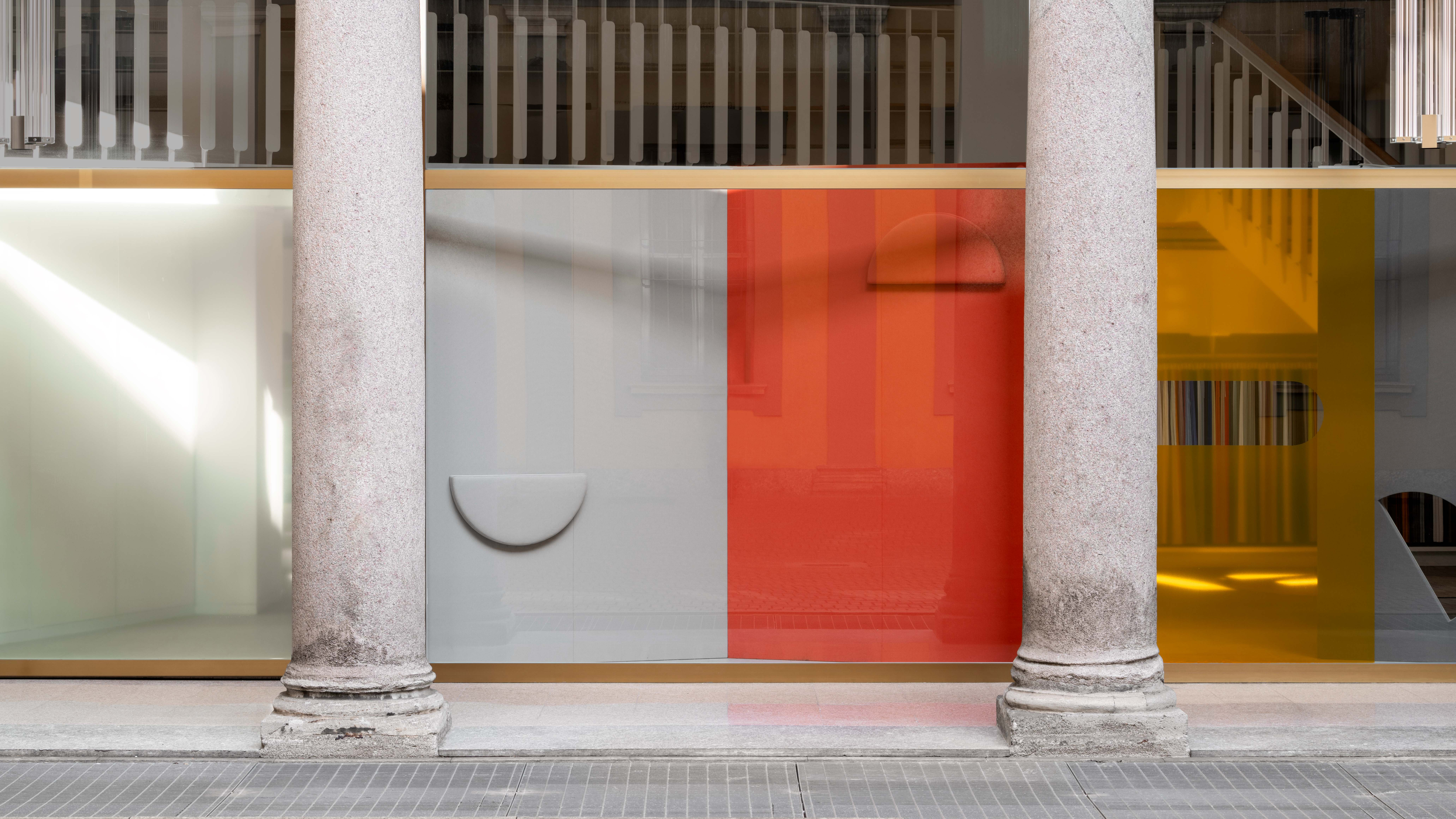 Kapwani Kiwanga transforms Kvadrat’s Milan showroom with a prismatic textile made from ocean waste
Kapwani Kiwanga transforms Kvadrat’s Milan showroom with a prismatic textile made from ocean wasteThe Canada-born artist draws on iridescence in nature to create a dual-toned textile made from ocean-bound plastic
By Ali Morris
-
 This new Vondom outdoor furniture is a breath of fresh air
This new Vondom outdoor furniture is a breath of fresh airDesigned by architect Jean-Marie Massaud, the ‘Pasadena’ collection takes elegance and comfort outdoors
By Simon Mills
-
 Eight designers to know from Rossana Orlandi Gallery’s Milan Design Week 2025 exhibition
Eight designers to know from Rossana Orlandi Gallery’s Milan Design Week 2025 exhibitionWallpaper’s highlights from the mega-exhibition at Rossana Orlandi Gallery include some of the most compelling names in design today
By Anna Solomon
-
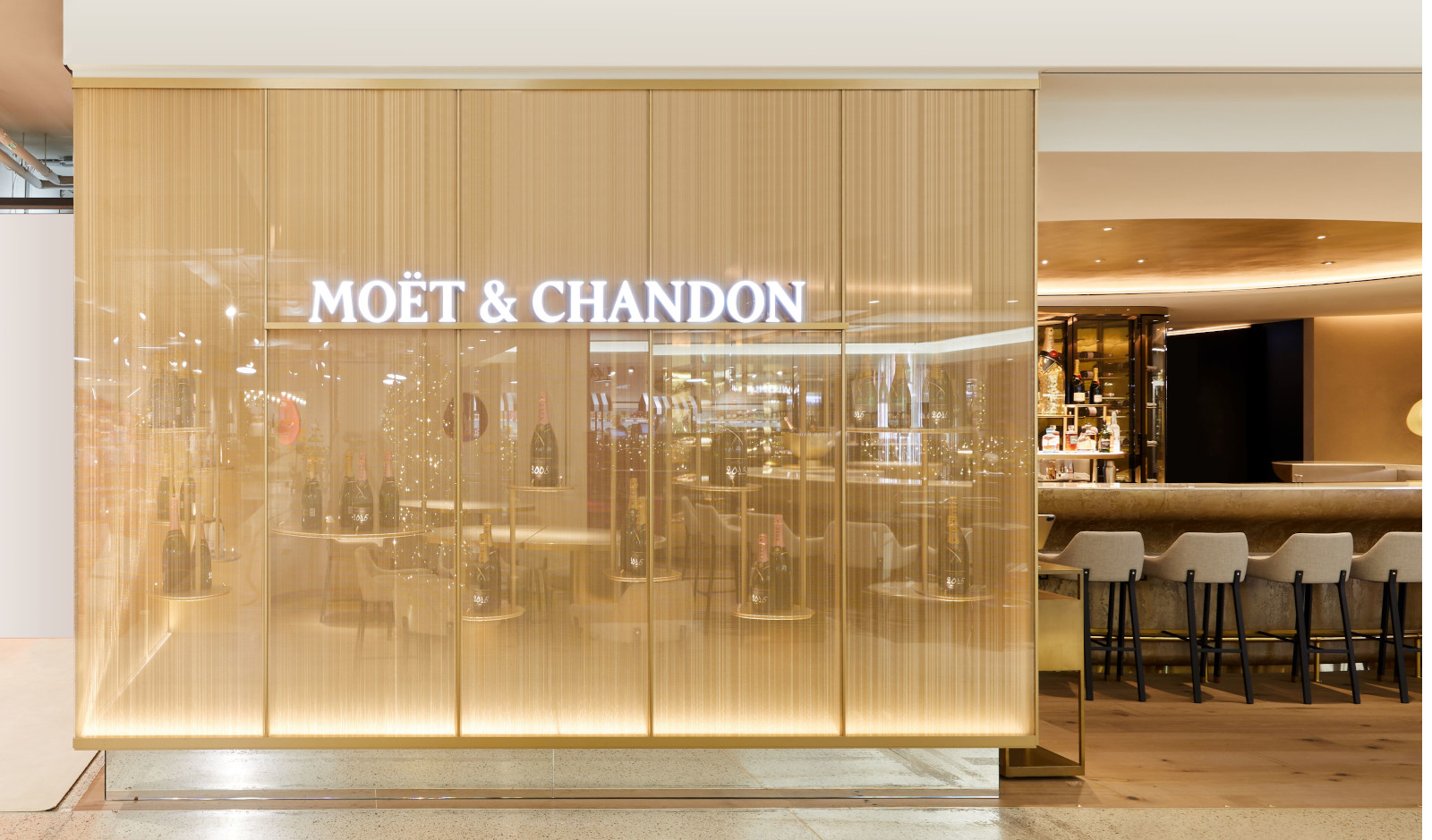 New Moët & Chandon bar in Berlin is about toasting everyday wins
New Moët & Chandon bar in Berlin is about toasting everyday winsYabu Pushelberg designs the Moët & Chandon bar at Berlin department store KaDeWe, an opulent spot to celebrate
By Tianna Williams
-
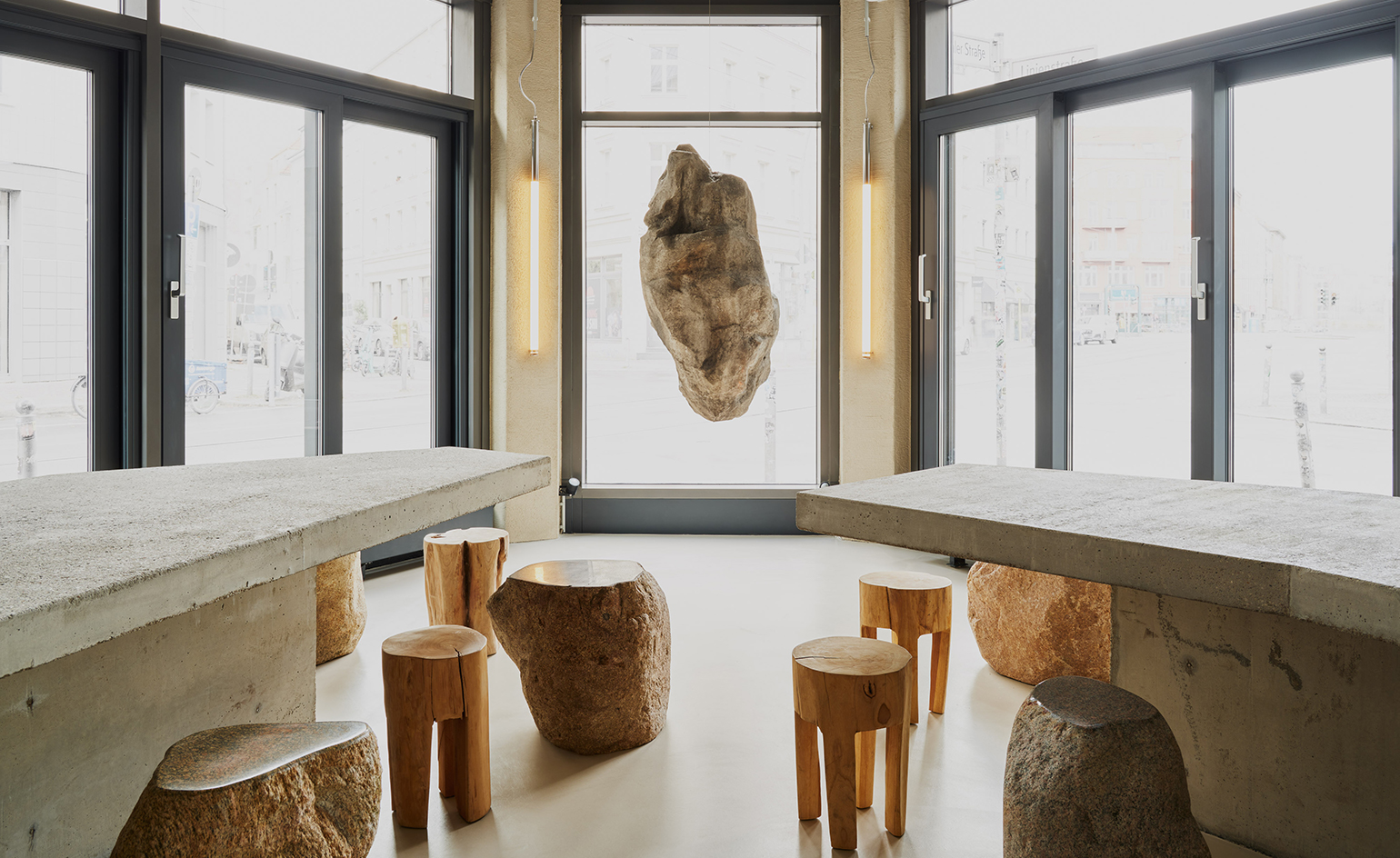 Vaust designs new poke restaurant, Berlin style
Vaust designs new poke restaurant, Berlin styleBerlin design studio Vaust creates a concrete and stone poke restaurant in the heart of the city
By Mary Cleary
-
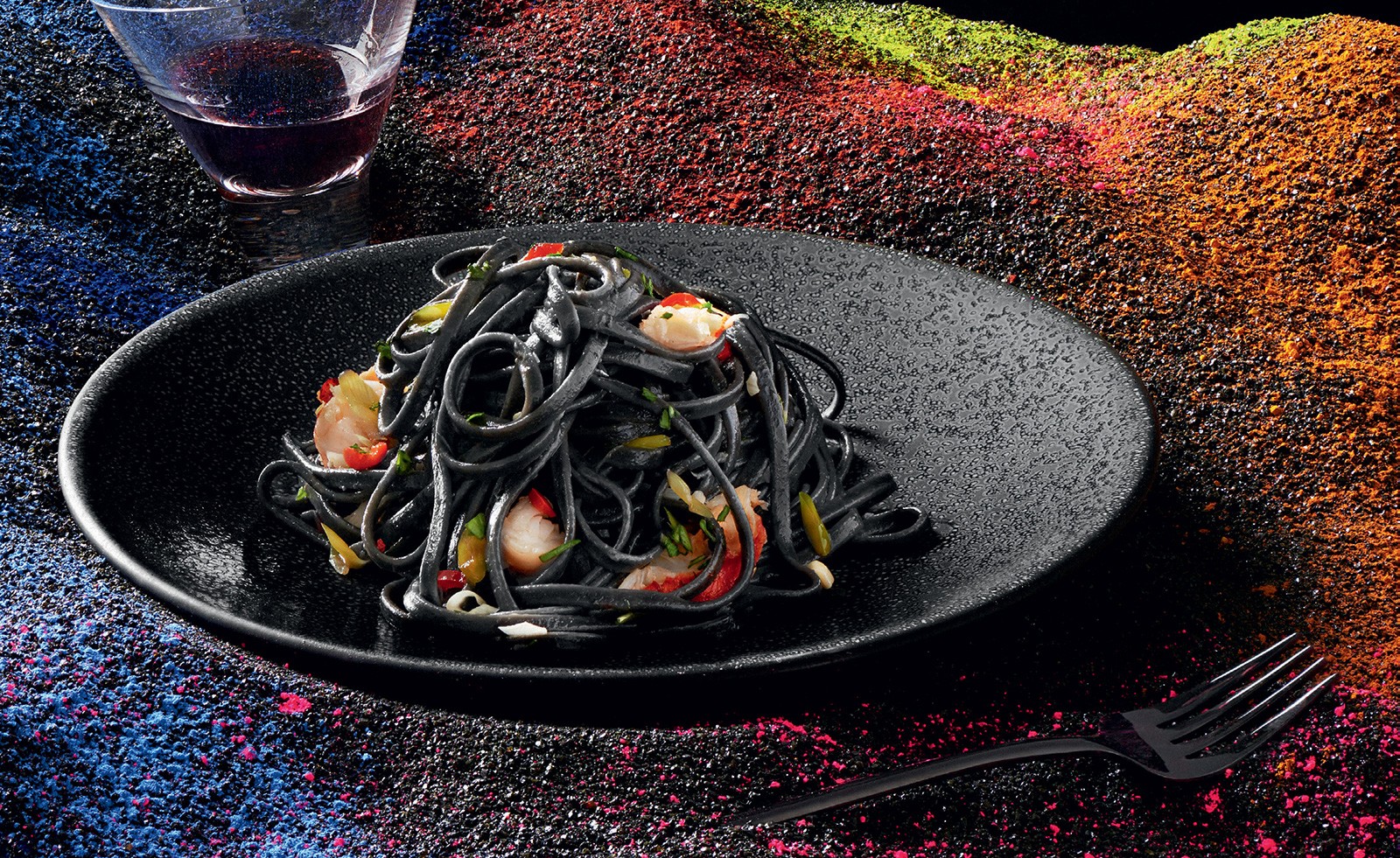 Artist’s Palate: Katharina Grosse’s squid ink pasta
Artist’s Palate: Katharina Grosse’s squid ink pastaBy TF Chan
-
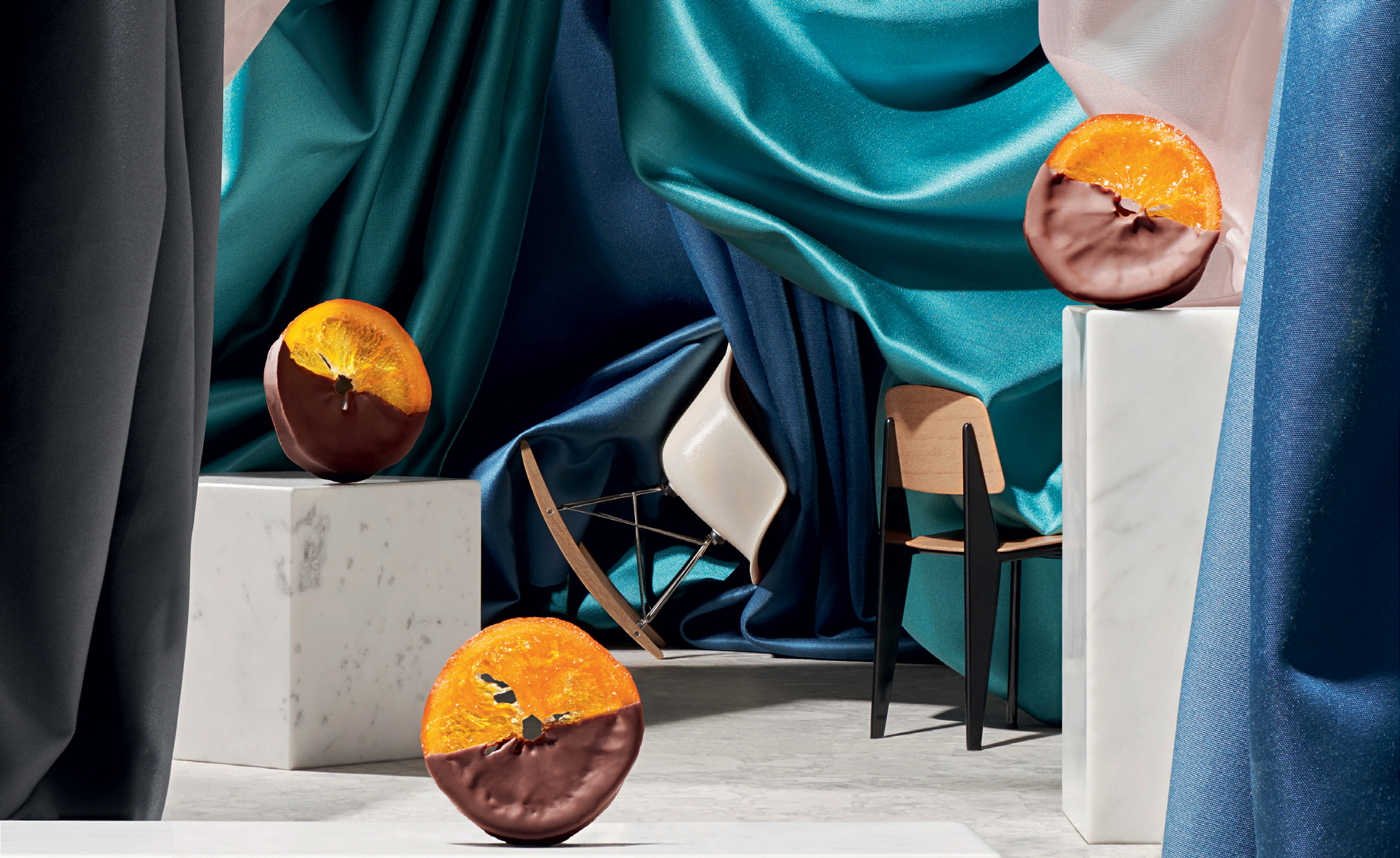 Artist’s Palate: Ulla von Brandenburg’s orangettes
Artist’s Palate: Ulla von Brandenburg’s orangettesBy TF Chan
-
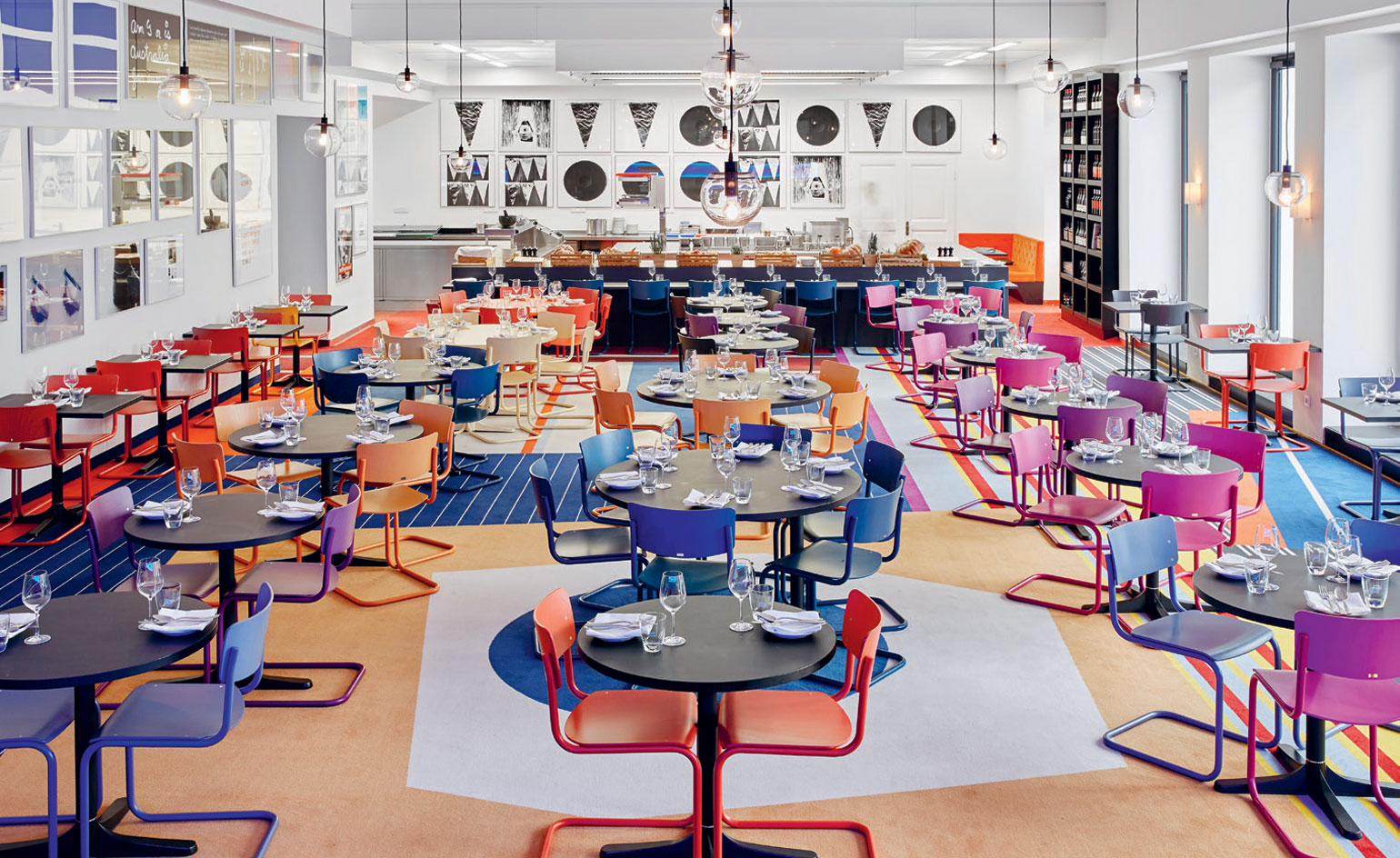 Rosemarie Trockel serves art at a newly refurbished Düsseldorf brasserie
Rosemarie Trockel serves art at a newly refurbished Düsseldorf brasserieBy Nils Binnberg
-
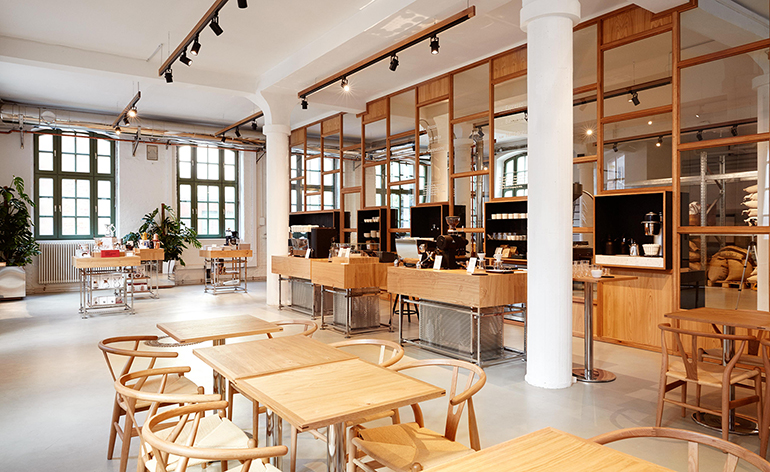 Get your fix: the Bonanza Roastery Cafe gives Berlin a new coffee star
Get your fix: the Bonanza Roastery Cafe gives Berlin a new coffee starBy Sara Sturges
-
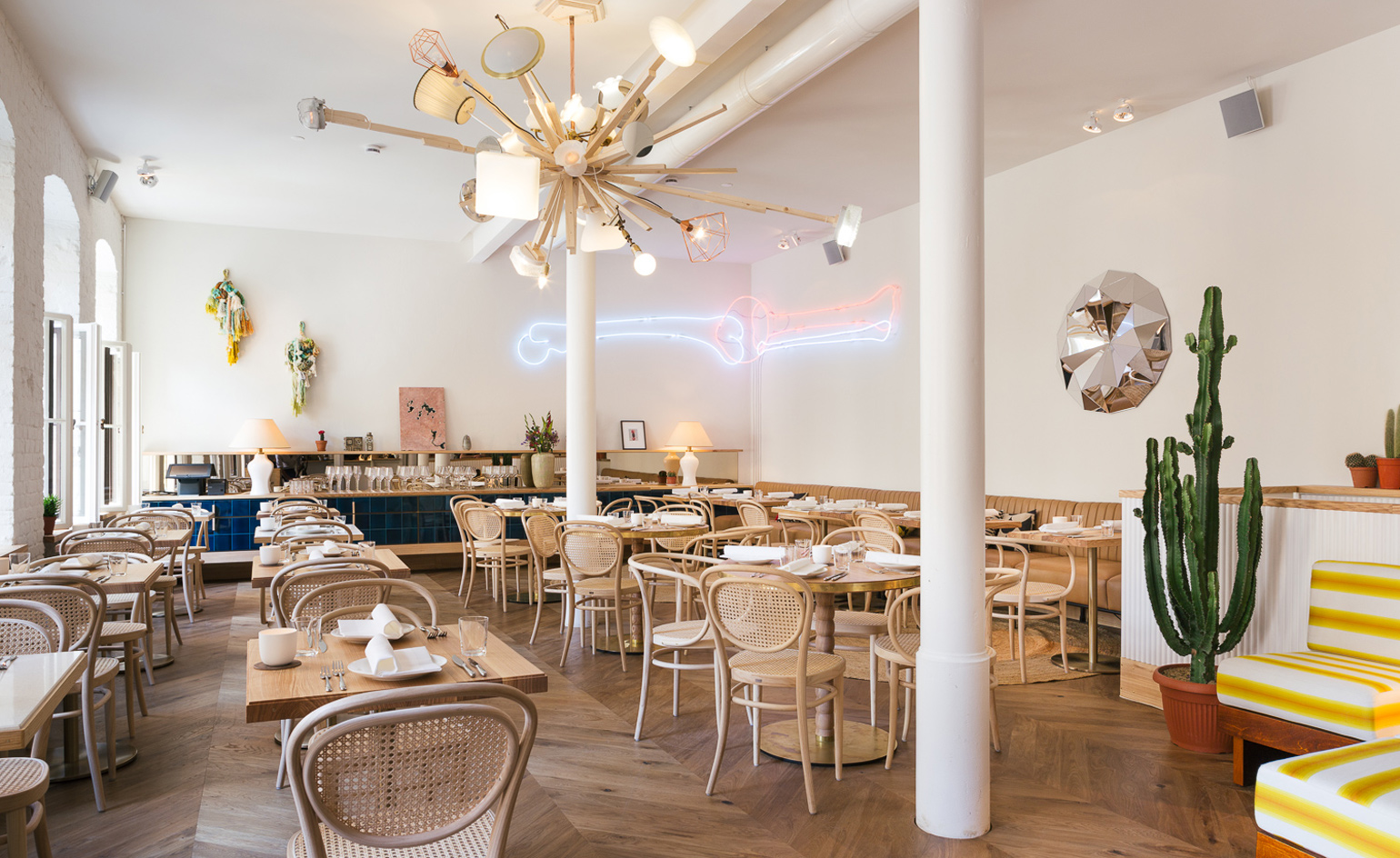 At Berlin restaurant Panama, new German cuisine is the order of the day
At Berlin restaurant Panama, new German cuisine is the order of the dayBy Jessica Klingelfuss
-
 Spiritual home: architect Philipp Mainzer distills tradition at Monkey 47 gin
Spiritual home: architect Philipp Mainzer distills tradition at Monkey 47 ginBy Rosa Bertoli